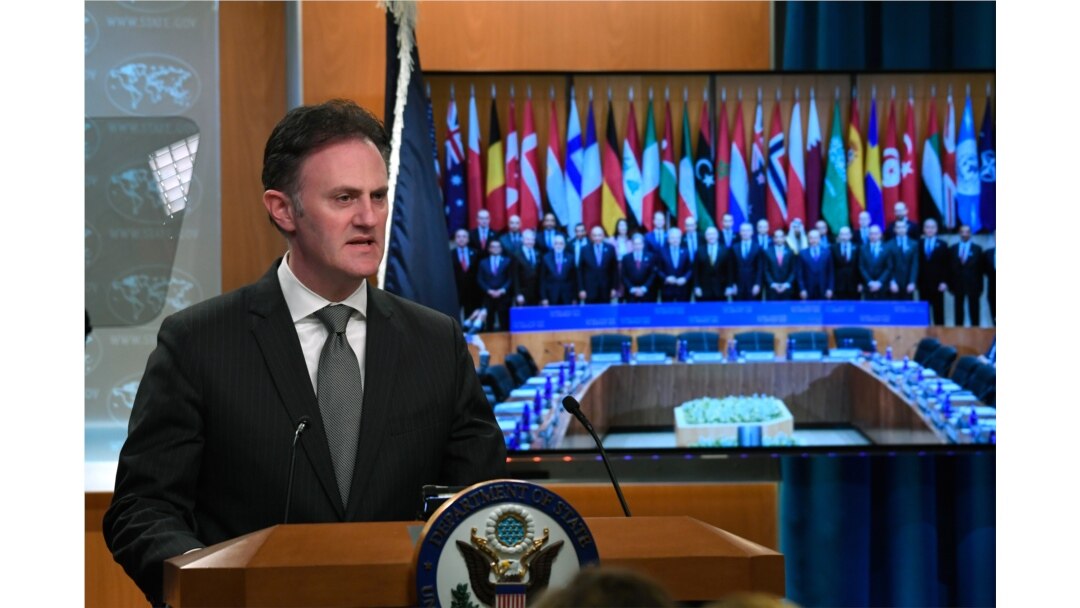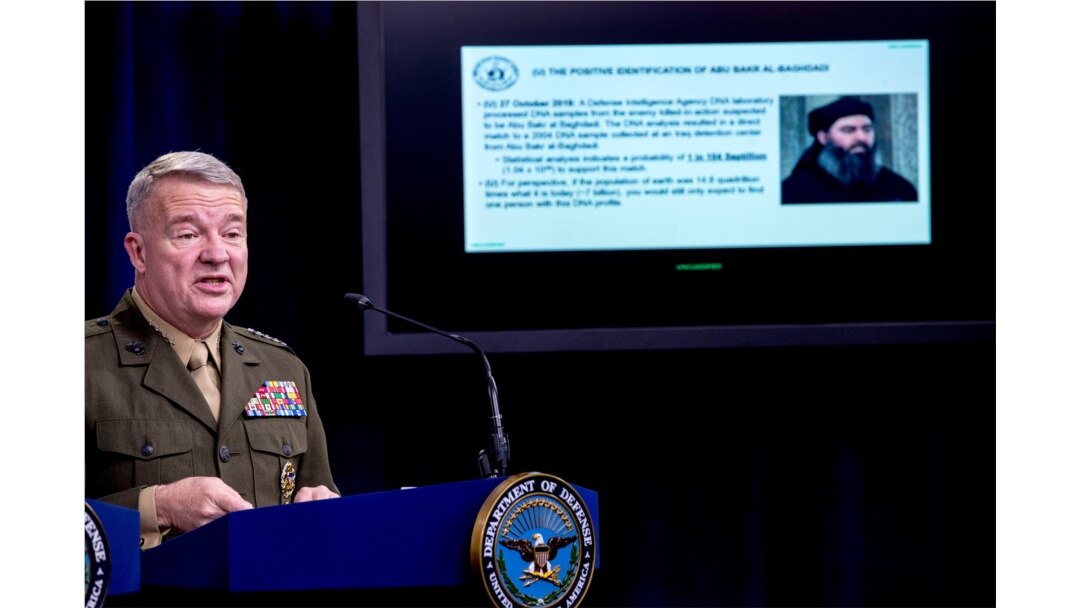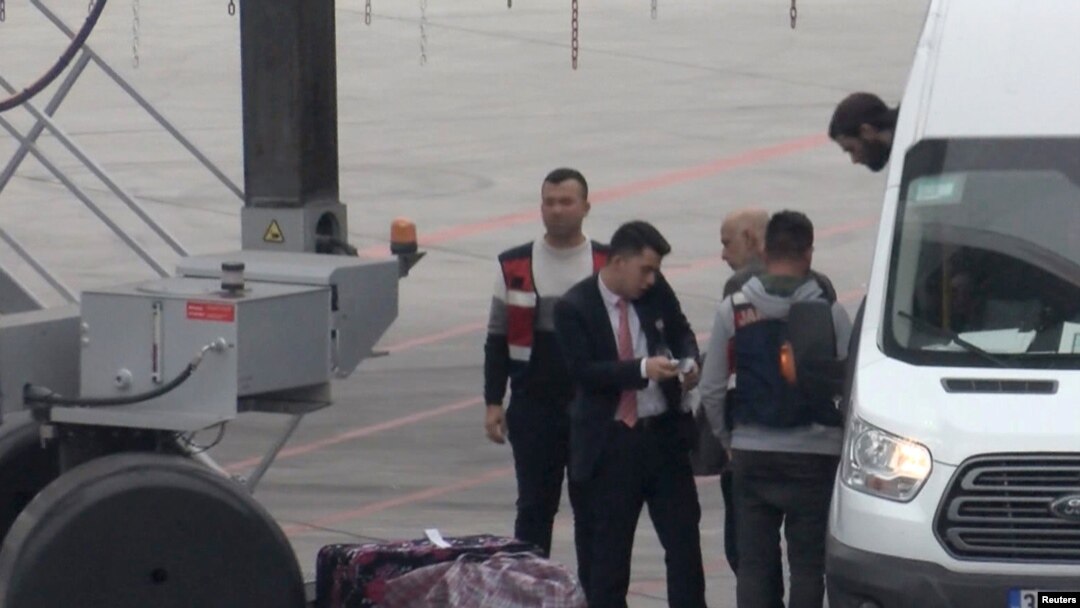The United States and other members of the coalition to defeat the Islamic State failed to reach consensus on what to do with captured foreign fighters, one of several issues threatening to reverse gains made against the terror group in Syria and Iraq.
The lack of progress followed a nearly daylong meeting in Washington with just more than 30 of the coalition’s 81 members, during which the U.S. vowed not to abandon its leadership of the fight against IS.
Despite such pledges, however, U.S. diplomats were unable to persuade coalition allies to repatriate about 2,000 IS fighters who left their homes to join the self-declared caliphate.

Ambassador Nathan Sales, coordinator for counterterrorism, speaks during a news conference at the State Department in Washington, Nov. 14, 2019, following the Global Coalition to Defeat ISIS Small Group Ministerial meeting.
“There is unanimity that the foreign terrorist fighter problem is a serious one,” Ambassador Nathan Sales, State Department counterterrorism coordinator, told reporters following the ministerial-level meeting. “There is candidly a difference of opinion about the best way to solve this problem.”
Many countries, especially those in Europe, have balked at requests to repatriate their own foreign fighters, often citing concerns their respective legal systems are not equipped to effectively prosecute and punish those charged with fighting in Syria or Iraq.
US reaction
That has not gone over well with U.S. officials, who repeatedly have warned that the longer these fighters are left to languish in makeshift prisons, the more likely they are to eventually escape and rejoin about 14,000 IS fighters waging a growing insurgency across Syria and Iraq.
“There should be a sense of urgency to repatriate now while we still can,” Sales said. “Today the situation with [foreign fighters] in Syria may seem relatively stable. But it’s Syria. We all know things can change in the blink of an eye.”

FILE - Positive identification information on Abu Bakr al-Baghdadi is displayed as U.S. Central Command Commander Marine Gen. Kenneth McKenzie speaks, Oct. 30, 2019, at a joint press briefing at the Pentagon in Washington.
U.S.-backed forces in Syria liberated the last of IS-held territory this past March, ending the terror group’s self-declared caliphate. And late last month, the U.S. announced the death of IS leader Abu Bakr al-Baghdadi and his presumed successor, IS spokesman Abu Hassan al-Muhajir, in successive raids.
Yet IS has been resilient, with major IS affiliates rallying behind Abu Ibrahim al-Hashimi al-Qurashi, the terror group’s newly named caliph.
“The insurgency is alive and kicking in northwest Iraq for sure,” Russell Travers, acting director of the U.S. National Counterterrorism Center, warned last week.
“There are already no-go areas at night,” he said, adding, “We see ISIS flags and we see small areas where Sharia is being implemented.”
NATO Secretary-General Jens Stoltenberg echoed the concerns Thursday.
“The fight is not over. ISIS is still a threat,” he said, using an acronym for the group. “The situation in northern Syria remains fragile and difficult.”
James Jeffrey, special representative for Syria engagement and special envoy to the Global Coalition to Defeat Islamic State, speaks during a news conference at the State Department in Washington, Nov. 14, 2019.
Ambassador James Jeffrey, the U.S. special representative for Syria, agreed.
“Our success is threatened,” he told reporters at the conclusion of the meeting, noting other, growing concerns, including the instability introduced by Turkey’s incursion into Syria last month that targeted Syrian Kurds who had been fighting with the coalition to defeat IS.
According to U.S. officials, the fighting and subsequent deal-making strengthened IS while also introducing Turkish-backed militias, as well as Syrian and Russian forces, into the conflict zone in northeastern Syria.
But Jeffrey said the coalition was intent on not letting differences and complications sidetrack the mission to defeat IS.
“What we’re going to do is close ranks, maintain unity, keep coordinating and work together to deal with these crises, rather than to point fingers,” he said.
U.S. officials said they also pushed coalition members to help alleviate funding shortfalls for stabilization efforts in Iraq and northeastern Syria, and to repatriate thousands of women and children, the wives and family members of IS fighters, who are being held in displaced-persons camps in Syria and Iraq.
Secretary of Sate Mike Pompeo, center, and other foreign ministers and foreign officials pose for a photo at the State Department in Washington, Nov. 14, 2019, for the Global Coalition to Defeat ISIS Small Group Ministerial meeting.
‘Taking the fight to ISIS’
Earlier Thursday, Secretary of State Mike Pompeo opened the meeting of coalition members by rejecting criticism that U.S. leadership has been lacking after President Donald Trump announced multiple times last month that U.S. forces would be leaving Syria.
“You all know we must keep taking the fight to ISIS. So do we,” he told visiting ministers.
“We took out Baghdadi and his would-be successor,” Pompeo added. “Ask each of them whether there’s a deficit in American leadership.”
Despite what U.S. military officials have described as a measured withdrawal from bases used to counter IS across northeast Syria, senior defense officials have said they plan to keep 500 to 600 troops in the Deir el-Zour area of eastern Syria.
The mission, according to officials, is both to continue supporting the U.S.-backed Syrian Democratic Forces as they battle IS cells on the ground and to protect nearby oil fields so they cannot be exploited by IS.
But while hosting Turkish President Recep Tayyip Erdogan at the White House on Wednesday, U.S. President Donald Trump said the main concern was the oil itself.
“We’re keeping the oil,” he said. “We left troops behind only for the oil.”
WATCH: US Says It Won't Abandon Fight Against IS in Syria
Your browser doesn’t support HTML5
US Says It Won't Abandon Fight Against IS in Syria
Focus remains
The State Department’s Jeffrey defended the president’s assertions Thursday, while insisting Washington’s focus remains on IS as a whole.
“It is absolutely legitimate for the president to decide ... which part of that mission he wants to highlight,” he said. “I know what he has signed off on.”
Jeffrey also told reporters that coalition members expressed “general support” for the U.S. approach and posture in northeast Syria, and that some, while choosing not to go public, have even offered support.
Some analysts have raised concerns, though, about the impact that lingering confusion over Washington’s Syria policy could have on coalition members.
“Our allies rightly are questioning what is our strategy, what is our operational approach to ISIS, knowing that the administration has essentially changed its position day to day on the whims of President Trump,” Mark Simakovsky, a senior fellow at the Atlantic Council and a former U.S. defense official, told VOA ahead of Thursday’s meetings.
“I think there’s real confusion,” he said.
VOA State Department Correspondent Cindy Saine contributed to this report.


